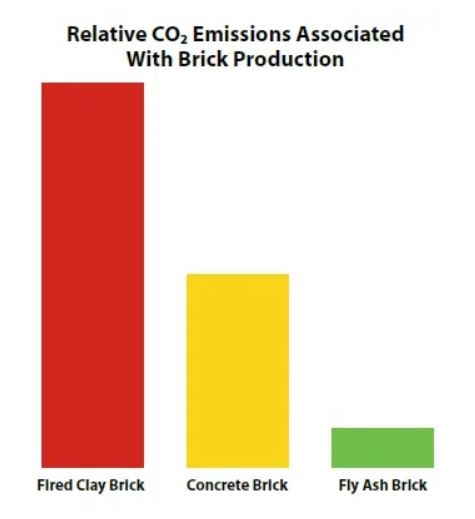As the world grows another day old with each sunset, so grows the volume of pollution enveloped in the layers of its atmosphere. We discuss pollution a lot of times in our daily lives and sometimes even take the initiative to make the best out of our regular life wastes. The simplest example of recycling regular wastes into reusable formats is converting household vegetable waste into compost. The same way, bigger and more harmful environmental pollutants too can be recycled and reused for better purposes. One such waste is FLY ASH.
What is Fly Ash?
Fly ash is a byproduct from thermal power plants produced due to burning coal. These ashes are light weight and fly out with the exhaust gas, hence the name Fly Ash. These fly ash particles are captured by electrostatic precipitators and bag houses of the thermal plant.
India itself produces more than 150 million tons of fly ash every year. All of this waste is disposed off in very close proximity of human habitat. Heaps of fly ash may be spotted in areas/cities with thermal power plants, the amount of which is obviously growing with more thermal plants coming up to meet the increasing energy demand. People, especially the ones living in these areas are directly exposed to the ill effects of the thermal waste. Fly ash threatens the existence of both living organisms and their environment.
Is Fly Ash harmful for human health?
Totally!!
Coal ash contains a number of toxic chemicals like arsenic, lead, mercury, hexavalent chromium and radioactive radium.
3 most harmful effects of inhaling coal ash in human are:
- The fly ash particles when inhaled, can form residues and settle in our lungs, thereby triggering asthma, inflammation and immunological reactions.
- According to a report from the US, doctors link fly ash particulates to death caused by heart disease, cancer, respiratory disease and stroke.
- Silicosis or scarring of lung tissues is a common outcome of fly ash sedimentation in the lung due to the presence of crystalline silica in its particles. The disorder is known for often leading to cancer.
Being such a toxic thermal waste, can fly ash be reused in any form?
Yes, fly ash can be reused in various ways and its harmful effects on humanity can be effectively cut down through proper utilization of the material.
Read on to know the various uses of fly ash and its benefits:
- One of the most beneficial uses of fly ash is being used as a raw material in concrete, grout and cement.
- Use of fly ash instead of clay as raw material in brick production has significant environmental benefits. According to authorities:
Carbon footprint per cubic yard of fired clay = 991 pounds
Carbon footprint per cubic yard of concrete brick = 572 pounds
Carbon footprint per cubic yard of fly ash brick = 191 pounds
(Source: breakingenergy.com)
- It is used as a fill material in road beds and stabilization projects.
- Fly ash is greatly used as a resource material in – Alumina, Magnetica, Carbon, Mineral Fillers, Enhanced Pozzolana and other minor items.
- Other places where fly ash is used as a raw material are –
High wear resistant ceramic tile, Mineral Wool, Glazed floor and wall tiles, Ash alloys, Synthetic wood, Decorative glass, Fire abatement applications, Adsorbent for toxic organics, Foam insulation products, Ceramic Fibre, Distemper, Oil well Cement, Domestic cleaning powder, Continuous casting mould powder, Ultra-light hollow sphere for arid zone cultivation.
The fact that coal fly ash waste is a growing problem is known to all. However much we use them in building brick and concretes, the toxins present in them shall not cease to harm humans and the environment. Tons and tons of such fly ash waste are dumped in open places or near waterways. The hazards it imposes on the earth can be controlled only through stricter guidelines regarding disposing such wastes and their proper treatment. Though the present environmental regulations have already put a pressure on the coal power industry to limit the emission of fly ash, mass awareness and more research on ways to reduce their level of toxicity when used as raw/resource material in other forms may be suggested to the authorities.

